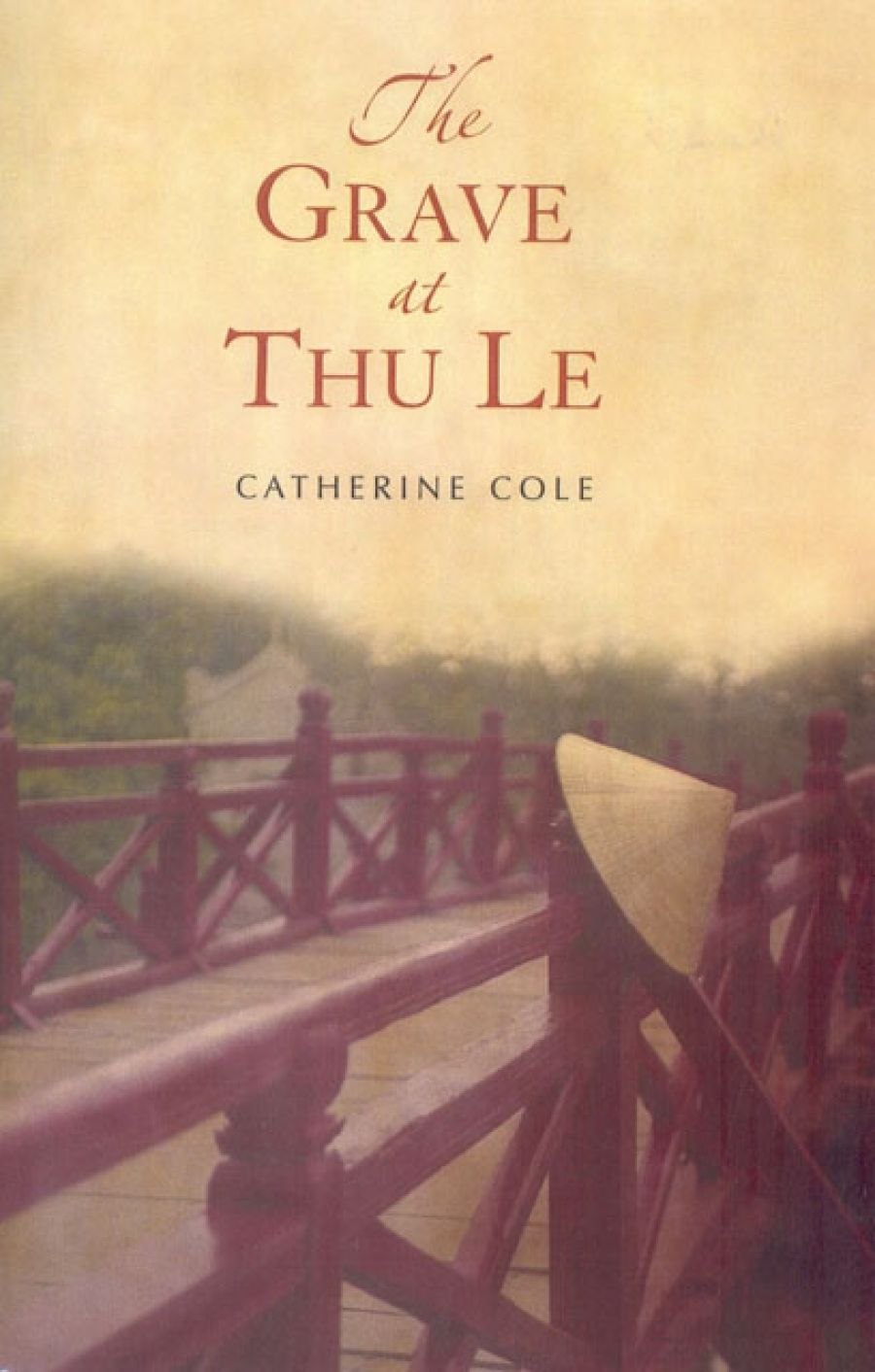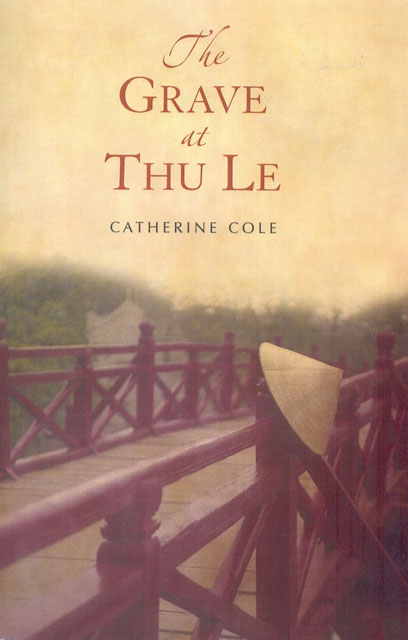
- Free Article: No
- Contents Category: Fiction
- Review Article: Yes
- Article Title: Picking at scars
- Online Only: No
- Custom Highlight Text:
The Grave at Thu Le explores a young French woman’s visit to Vietnam to research her ancestry, and to locate the cemetery in which members of her family were interred. Catherine D’anyers’s great-great-grandfather Claude was an engineer who lived in the colonial community in Hanoi at the turn of the last century. Past and present strands of the novel interweave as old, childhood stories of yester-year are overlaid with contemporary realities of Vietnam.
- Book 1 Title: The Grave at Thu Le
- Book 1 Biblio: Picador, $22 pb, 327 pp
- Book 1 Cover Small (400 x 600):

- Book 1 Cover (800 x 1200):

The D’anyers family fled when the French garrison at Dien Bien Phu fell to the Viet Minh national forces in 1954. During the 56-day siege, about 3000 French soldiers were killed and another 10,000 taken prisoner, but such details are nonchalantly omitted in the novel. Fortunately for the D’anyers, but unfortunately for the plot, they had already resettled in Paris by that stage. Although news of previous bloodshed, guillotinings and poisonings of French troops, and of the subsequent massacre of national insurgents, are mentioned in passing, for the most part The Grave at Thu Le is more interested in the domestic sphere, with politics deliberately marginalised. Every now and then there is a chilling reminder of war: the bamboo, for instance, is appreciated by the Vietnamese for its durability in construction, but, as various opposing forces could attest, it made an effective weapon when sharpened.
Despite such occasional references to Vietnam’s bloody history, Cole makes no sustained attempt to engage with the realities of the French occupation of Indochine. In fact, you would be forgiven for thinking that a colonialist’s duties merely extended to endless rounds of shopping, regattas, tea dances, pageants, picnics and parties – including the much-celebrated Bastille Day gala ball. As with any expatriate expedition, mementoes of the motherland are cherished for remembrance and comfort. During trips to Sapa, in the northern tip of the country, Claude and his family ‘sat in the replicated drawing rooms of home, eating French food, drinking French wine …’. Catherine may have been struck by the multitude of beggars in modern Hanoi, but her ancestors were blissfully cocooned against and inured to the poverty. After all, ‘food … always graced a colonialist’s table’. The D’anyers were responsible for constructing bridges in their host country, but culturally they remained at a safe distance from the locals. With their separate schools, hospitals and churches, the family’s social interactions with the Vietnamese were kept to a minimum. Sure, they employed Vietnamese servants and indulged in indiscreet liaisons with a local beauty or two, but their arm’s length approach to Vietnam is uncannily matched by Catherine’s equally limited outsider Western perspective as she retraces their footsteps.
The whole book is ostensibly made up of a series of snapshots. With its short, choppy chapters, The Grave at Thu Le has a narrative that is as circuitous as the narrator’s meanderings around Hanoi. She flits back and forth in time, dipping in and out of her relatives’ lives like a nervous visitor unable to rest for long in one place lest she overstays her welcome. Such a flighty, impressionistic structure skims the surface and prevents in-depth insight into any of the characters. Very little is known of the narrator herself; unlike the museums and libraries that she frequents, Catherine’s interior life is not open for inspection. A lack of compelling narrative also makes this a disappointing read. Apart from a couple of family secrets – the grave at Thu Le seems not to exist – resolution of the mystery is anti-climactic, the dramatic tension diluted to such an extent as to be non-existent.
As Catherine navigates her way around Hanoi, there are the standard, requisite travelogue commentaries: the skirmishes with traffic and beggars, the red and gold Tet preparations, and the usual grappling with inferior infrastructure that besets Third World societies. The intermingling of Vietnam’s social and mythical traditions, however, are presented with a keen eye: how, for instance, the communal courtyard in Hanoi is a hub of gossip, where a doorstep is ‘a child’s first chair and an old person’s last’; and how, as legend has it, Halong’s cluster of peaked islands were formed from the thrashing of a dragon’s tail. Cole’s depiction of a Vietnam trying to reconcile the past with the present is also interesting. Upon telling a local about her historical mission, it is not surprising that Catherine is considered a ‘girl picking at scars’. After all, it’s only Western tourists who huddle around war memorials and museums saucer-eyed and agape; most of the young Vietnamese nationals have their eyes cast to the future, dreaming of the capitalistic American way of life and submerging themselves in contemporary popular culture.
There is no denying that The Grave at Thu Le has passages of lyrical charm and beauty, but Cole’s dogged insistence in documenting the insular frivolities of the D’anyers and her failure to look beyond their cosseted lifestyle do her novel a disservice. The architecture of the book ends up feeling lightweight and insubstantial, despite the over-bearing weight of history that stains Vietnam and the blood spilt, generation after generation, to protect its interests.


Comments powered by CComment